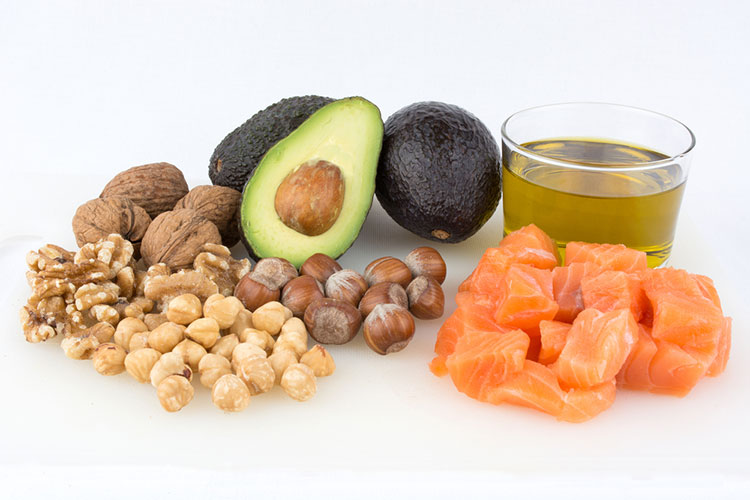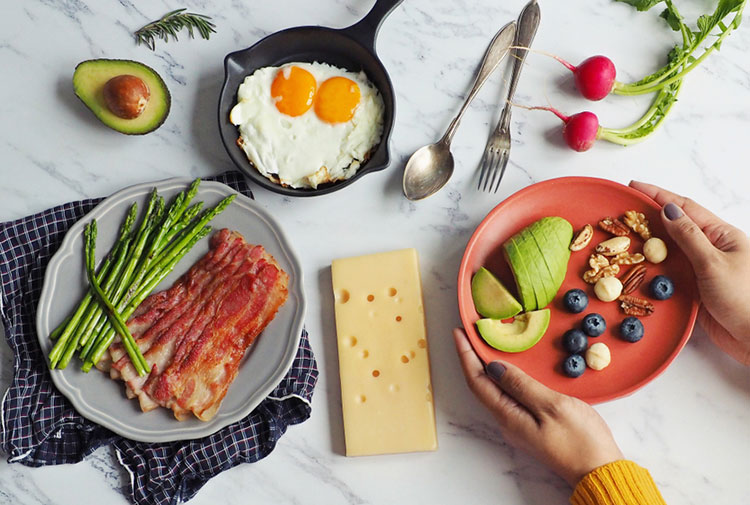Some people don’t know what to eat and what not to eat in keto diet.
In ketogenic and other low-carb diets, there are a variety of foods that you can have.
The only thing that you should be careful about in ketogenic diet is that eating high fat low carb foods is the principal.
Here we have prepared a list of ketogenic diet foods that you can read below.
Foods suitable for ketogenic diet
If you’ve just taken a ketogenic diet, the biggest question on your mind is probably finding low-carb, high-fat foods.
What food is suitable for a ketogenic diet? In the standard ketogenic diet, 70 to 80 percent of calories come from fat, 15 to 20 percent from protein, and 5 percent from carbohydrates.
With this explanation, you should have a list of suitable ketogenic foods. Now, here is the list of high-fat and low-carb foods in the ketogenic diet:
75% of your diet: healthy fats and non-starchy vegetables
Vegetables: leafy vegetables, broccoli, Brussels sprouts, cauliflower, asparagus, bok choy, zucchini, bell pepper, white mushroom;
Healthy fats: flaxseed oil, MCT oil, coconut oil, olive oil, organ meat, egg yolk omega-3, nut butter, avocado oil, almonds, walnuts;
Animal fats: fish (salmon, mackerel, sardine and tuna), organ meats (liver, tongue), sheep, shrimp;
Nuts and seeds: walnuts, nuts, sunflower seeds, flax seeds;
Other: 100% cocoa powder or chocolate, spirulina, almond flour, mineral water, tea or coffee (without sugar) and cheese.

Here are some cheeses that are lower in carbs for a keto diet:
Keto cheese list
- blue cheese
- cheddar
- Camembert
- Chevre
- cottage cheese
- Colby jack
- cream cheese
- feta
- goat cheese
- halloumi
- Havarti
- Limburger
- Manchego
- mascarpone
- mozzarella
- Parmesan
- pepper jack
- provolone
- Romano
- Swiss cheese
- string cheese
20% of your diet: proteins
Animal protein: chicken, turkey, duck;
bone broth;
collagen and gelatin powder supplements;
High-fat dairy products: high-fat cheese, cream cheese, cream;
5% of your diet: carbohydrates
Small amounts of berries: raspberries, blackberries, blueberries;
Legumes: green peas and beans;
Foods that should be limited ketogenic diet
To stay in ketosis, it’s best to limit these foods to get more results:
Full-fat dairy products
Dairy products should be limited due to the presence of natural sugar. Full-fat cheeses are lower in carbs, while low-fat milk and softer cheeses are higher in carbs.
Full-fat cow’s and goat’s milk has 11 to 12 grams of net carbohydrates per 1 cup.
Full-fat cottage cheese has 0.5 to 1.5 grams of net carbs per 1/4 cup.
Each half cup of full-fat cottage cheese has 5 grams of net carbs.

Low-fat foods
Any low-fat food will kicks you out of ketosis; Such as:
- low-fat or fat-free yogurt,
- low-fat or fat-free mayonnaise,
- low-fat salad dressing,
- low-fat peanut butter,
- low-fat or fat-free milk.
In this diet, you should use traditional and unprocessed healthy dairy products.
Semi-starchy vegetables
Each half-cup serving of cooked artichokes, carrots, beets, wild carrots, and okra has 7 to 14 grams of net carbs.
White, yellow, and sweet potatoes have 10 grams of net carbs per half cup.
Legumes and beans
Each half cup of cooked chickpeas, red beans, black beans, and lentils has 12 to 13 grams of carbohydrates.
A half cup of hummus has 12 to 13 grams of carbohydrates.
The amount of carbohydrates in soy products such as tofu and tempeh varies, but on average, half a cup of these baked goods contains 1 to 3 grams of net carbs.
Nuts and seeds
Almonds, walnuts, pistachios, sunflower seeds, pumpkin seeds, etc. have 1 to 4 grams of net carbs per 28 grams.
Every 2 tablespoons of nut and seed butter has 4 grams of net carbs.
Flax seeds and chia seeds have 1 to 2 grams of net carbs per 2 tablespoons.

Fruits
Berries such as blueberries, strawberries, blackberries, and raspberries have 3 to 9 grams of net carbs per half cup.
A pear has 8 to 9 grams of net carbohydrates.
Snacks
- protein smoothies;
- 7 to 10 olives;
- 1 tablespoon of nut butter or a handful of nuts;
- vegetables with cheese;
Flavorings
Most of the flavors below have 0.5 to 2 grams of net carbs per 1 to 2 tablespoons.
- sugar-free salsa and ketchup;
- heavy cream;
- mayonnaise sauce;
- mustard sauce and hot sauce;
- lemon and lime juice;
- soy sauce;
- pickles;
- stevia;
- Erythrol
In this article, we mentioned foods which are allowed and not allowed in ketogenic diet. Foods that are low in carbohydrates and high in protein and fat help to keep the body in ketosis.
In this case, the keto diet helps with weight loss, blood sugar control, and other health goals. However, the low-carb, high-fat approach may seem too restrictive, especially at first, but this eating pattern includes a wide variety of nutritious, delicious, and versatile foods that allow you to get the nutrients your body needs.
Provide yourself to benefit from all the health advantages of foods in keto diet, it is better to consume a variety of ketogenic foods so that your body does not suffer from vitamin deficiencies.

Leave a Reply